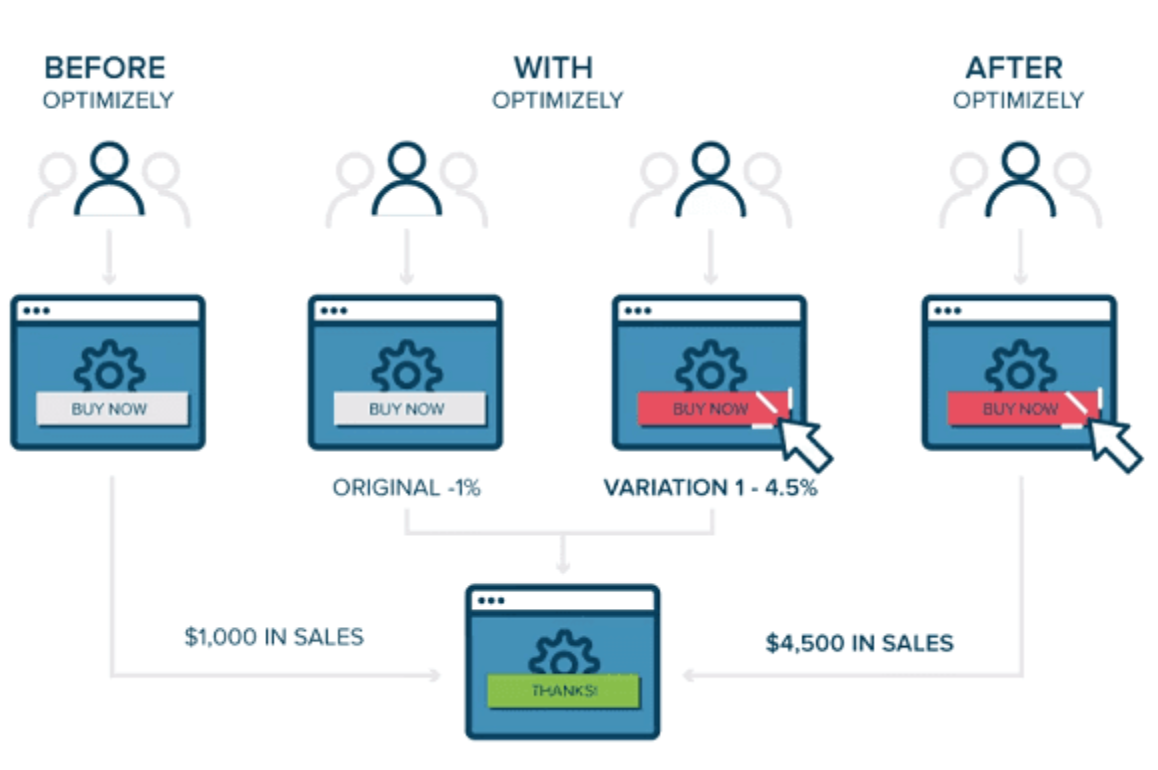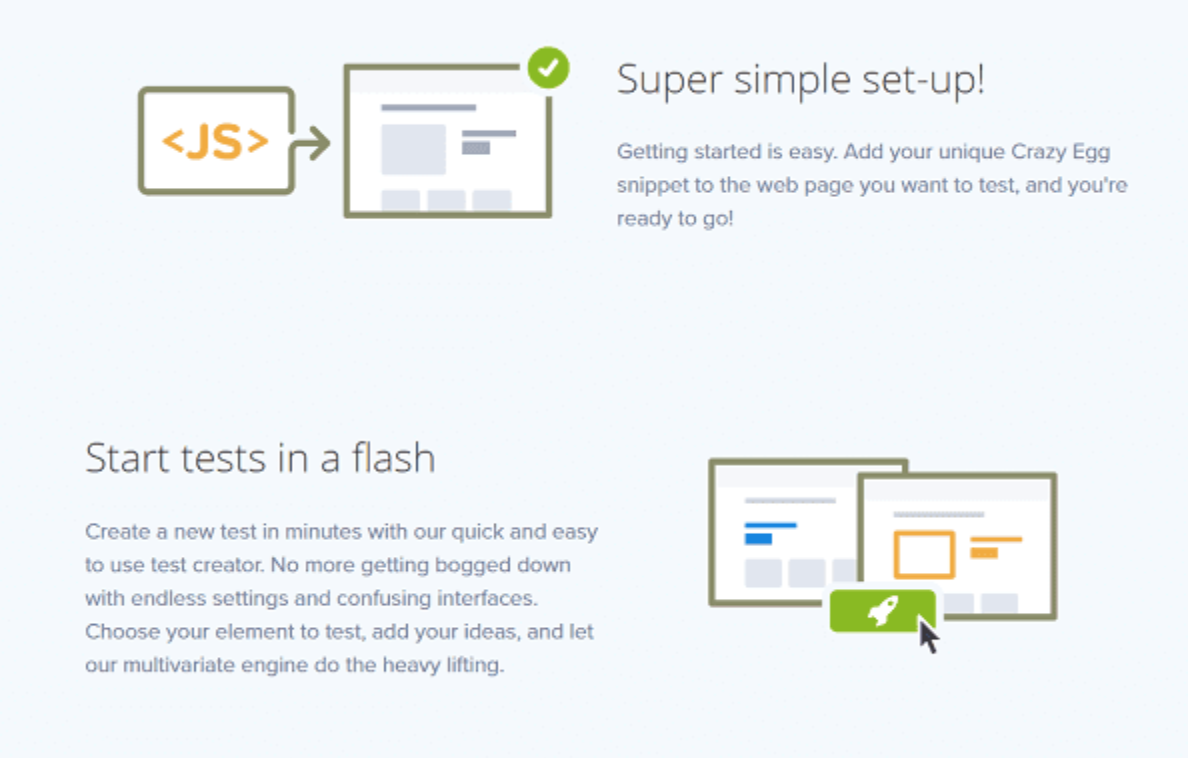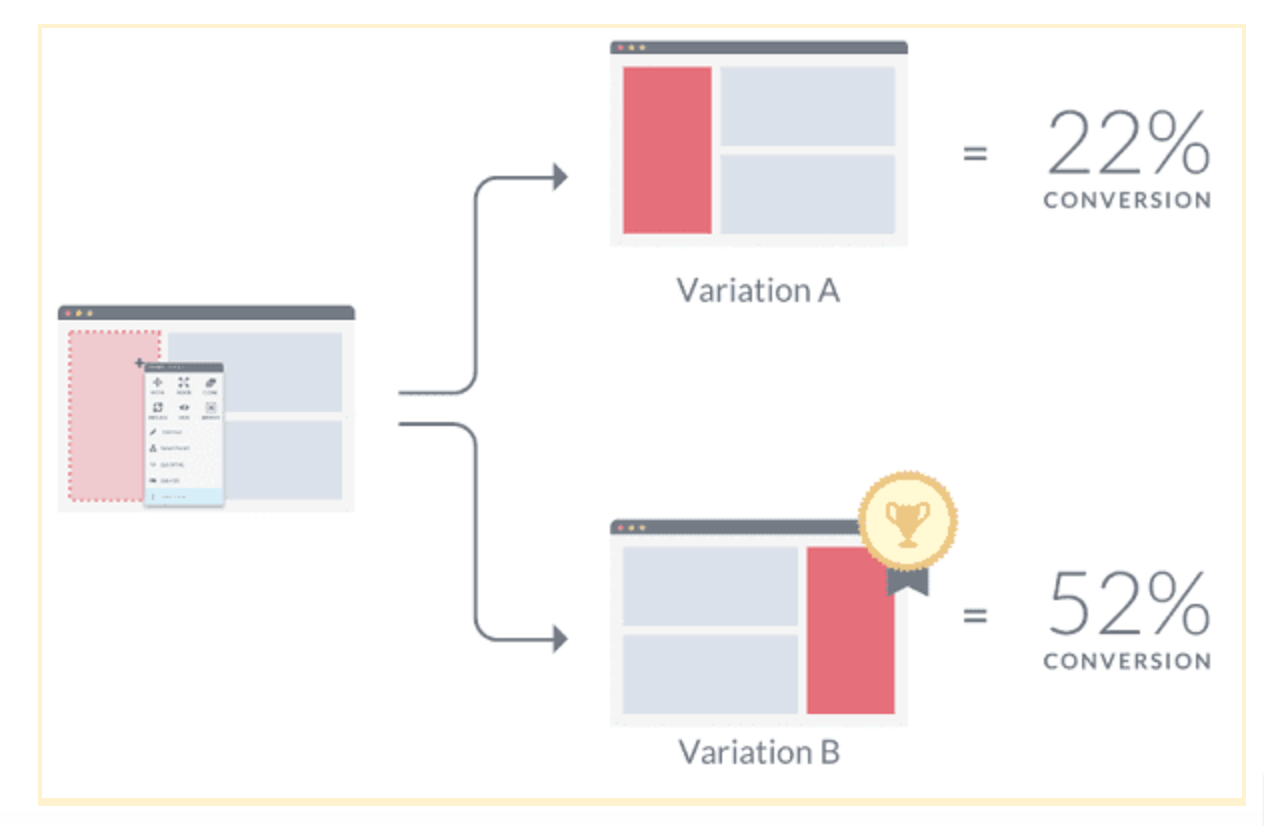Online success is about more than just generating traffic. It’s also about turning your visitors into leads and customers.
To do that, you’ll need to create a killer user experience and optimize your website to increase conversions! Enter, conversion rate optimization (CRO).
But what exactly is conversion rate optimization? For the uninitiated, CRO may seem like a lot to take in. But don’t worry, you likely already intuitively know the core concepts.
So, let’s dive in and get familiar with conversion rate optimization best practices, so you can capitalize on the opportunity your website traffic provides.
What is CRO and Why Does It Matter?
Before we get any further, the term “conversion” simply refers to a visitor completing a goal through a webpage. So, when a visitor subscribes to your mailing list or when a Twitter follower makes a purchase, that’s a conversion.
Therefore, your conversion rate is the percentage of total visitors your site gets that ultimately complete whatever you’ve deemed a conversion.
If you’re new to marketing, it might be easy to mistake conversion rate optimization for any other marketing technique. But don’t be fooled, it’s actually a bit different.
Most marketing campaigns focus on filling the top of the funnel. But this is different, and it’ll thus require a unique approach and set of tactics and conversion rate strategy.
Remember, optimizing your conversion rate is vital to improving marketing ROI. So this isn’t a part of the digital marketing process that you’ll want to overlook.
It doesn’t really matter if you’re in a B2B industry, a local service professional, or a Shopify ecommerce store. It’s an important tool to leverage regardless. In fact, boosting conversion rates for Shopify stores is one of the highest impact ways ecommerce business owners can improve their overall sales volume.
Now that you’ve got the basics, let’s cover some of the most effective tactics and techniques you can use to boost your conversion rate.
A/B Testing
With CRO, you can’t rely on guesswork or just copy other brands. Every business has unique needs, and the only way to determine them is through trial and error.
Conducting an A/B or split test is a great start! It involves testing two or more versions of a page or piece of content at the same time.
Remember, optimizing something requires weeks — if not months — of data before decisions can be made.
Every detail, from your headline text to a product photo, can impact conversion rates. So no change is too big or small to be on the docket for a proper A/B test. Just be sure to properly isolate variables, so you don’t run the risk of drawing erroneous conclusions.
A great place to start optimizing is your most important landing page. After all, that’s where the majority of your leads will first interact with your brand. As you might imagine, iterative improvements to important pages like these can eventually lead to dramatically improved results.
Usually, in order to properly A/B test, you’ll need to consider an external platform to implement your testing protocols.
Here are a few of our favorite split testing platforms, and a brief overview of their pros and cons.
1. Optimizely

Optimizely is an A/B testing platform for digital channels on all devices. It monitors versions of a web page or app interface and identifies variables that affect conversions.
2. Crazy Egg

With Crazy Egg, you can skip the number-crunching and observe how visitors use your site with “heat maps”. It offers easy-to-use A/B testing tools and only requires you to select the specific thing you want to test.
3. VWO

VWO works just like Optimizely. After creating variations of your web page, you can start tracking clicks, signups, and other metrics that matter for conversion rate optimization.
But CRO doesn’t just stop at A/B testing. Customer feedback, user feedback, and web analytics should be used to assess current standing and future changes to a website.
User Experience
Not only does UX play a part in attracting and retaining leads, but UX also plays a part in converting customers.
If your website is hard to navigate, slow to load or contains an overwhelming amount of unorganized information, then it’s highly likely your user experience may suffer.
Remember, your site should be useful and useable.
Statistics show that 40% of web users will leave a site that takes longer than 3 seconds to load. If you want to convert your visitors into leads and customers, you better believe optimizing your site speed is well worth the effort.
So what can you do to improve your user experience? Here are some things to consider first and foremost.
Experiment with Call-to-Action
CTA (Call-to-action) buttons are a huge factor in CRO. Experimenting with placement, color, and size of CTA buttons, and other on-page elements, all affect UX, and therefore, conversion rate.
The great news is, you can also use VWO and Crazyegg to test color, copy, design, and placement for CTA buttons.
< h3>Colors
While it might not seem that important, color can have a huge impact on CTA and conversion rates.
Hubspot found a 21% jump in conversion rate just from changing their CTA button from green to red.
So, research color schemes that will appeal to your audience on a different level. Making emotional connections with design and color will help draw attention to certain website elements, or on the opposite end, letting users focus on others.
Remember, it’s important to keep colors consistent with your brand as well.
Optimizing Lead Flows & Generation
The phrase “strike while the iron is hot” holds true in most forms of business, but it’s especially prescient when you’re talking about converting digital leads into sales.
Of course, in order to convert leads, you need to have some in the first place. But how can you improve your conversion rate strategy and encourage web visitors to engage in the first place?
Live chat
Live chat is an easy and accessible tool that allows customers to gain additional information about your services in seconds. Plus, it’s convenient and pretty simple to execute.
Implementing chatbots on high performing pages or live chat customer support to initiate conversations is a great place to start.
And surprisingly, more users are eager to convert and buy a product with live chat.
Apexchat recently released a study that “live chat can increase leads by up to 40%”.
Pop-ups
Pop-ups aren’t dead. And while some people may want that to be true, pop-ups are still just as effective at optimizing conversion rate today as they were a few years ago.
Ipaper noted pop-ups received an average conversion rate of 3%, in a study of two billion pop-up ads. While it doesn’t seem like a lot, it can definitely improve CRO.
Using pop-ups can be tricky, though. Try placing popups in high traffic areas and in the appropriate places, like landing pages.
Most importantly, be careful not to overwhelm your audience. Using too many pop-ups can be off-putting. Make sure your popups offer high-quality content, resources for users, or an incentive with a clear CTA.
Creating ebooks, webinars, or offering a free trial are a few ways you can provide leads with additional information and boost conversion rate.
Compelling content
And finally, as we mentioned above, use content to your advantage and as an incentive to attract and convert users and part of your conversion rate optimization strategy.
Content marketing strategies like blogs, ebooks, webinars, and infographics are great for brand growth and generating leads, which ultimately will affect your conversion rate.
In fact, visual-based content has a conversion rate 7 times that of text. Smart insights also concluded that website users spend less than 15 seconds reading text content.
Remember, quality over quantity. Creating compelling content and image-based content encourages conversion, and even improves SEO.
Conclusion
Overall, you can probably tell that conversion rate optimization is a serious but worthwhile endeavor for any and all website owners.
Of course, it’s also important to remember that CRO isn’t a weekend DIY project. It’s a never-ending process that requires consistent workflow, time, and energy.
If it seems like you may not be able to do the work due to a lack of time, I’d strongly encourage you to consider partnering with an agency or hiring an expert that can help take it off your plate.
At the very least, I hope the above was helpful in outlining a good starting point from which to kickstart (or restart) your own conversion rate optimization efforts.
Be sure to come back often for more marketing, SEO, and conversion rate optimization tips. Good luck!








